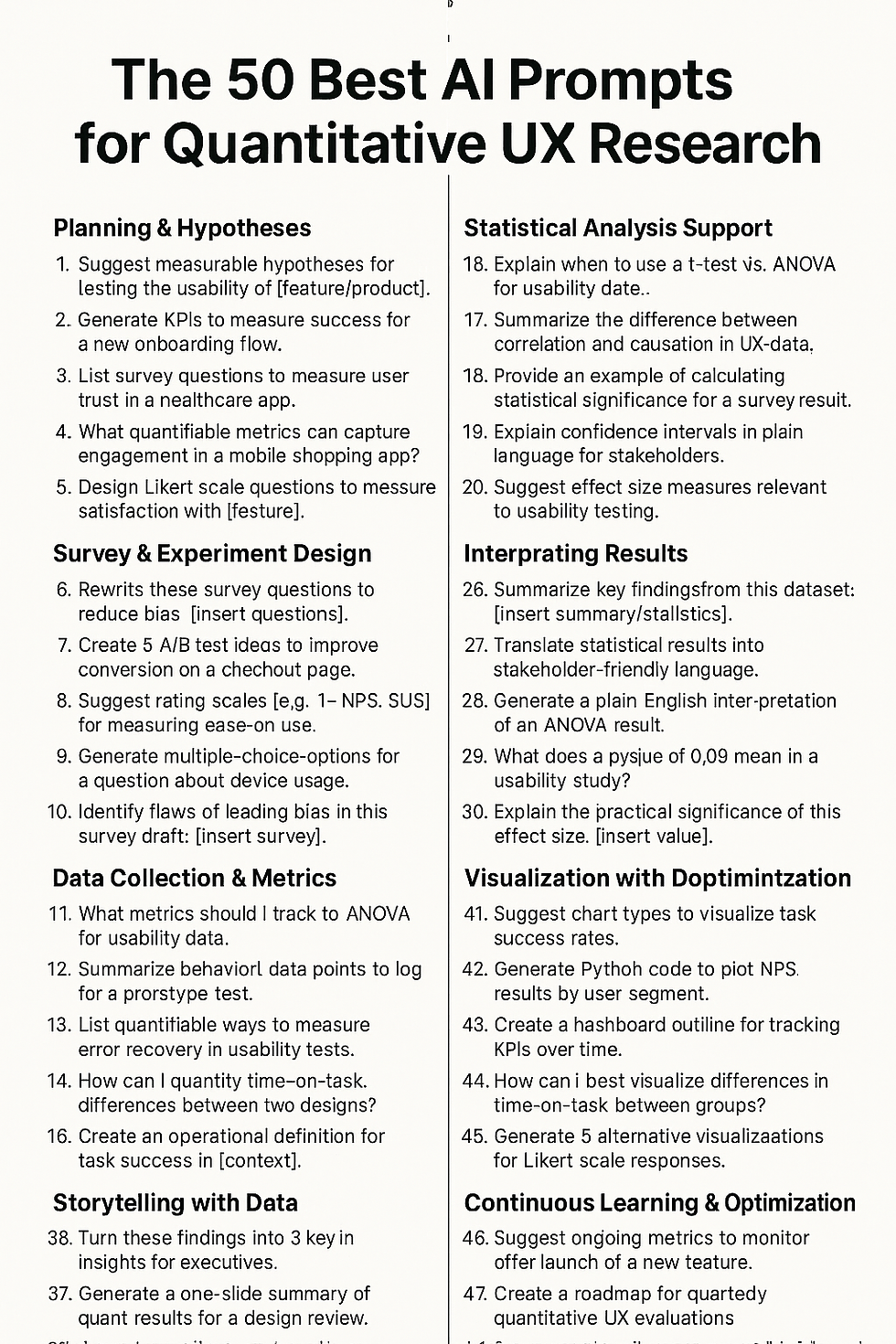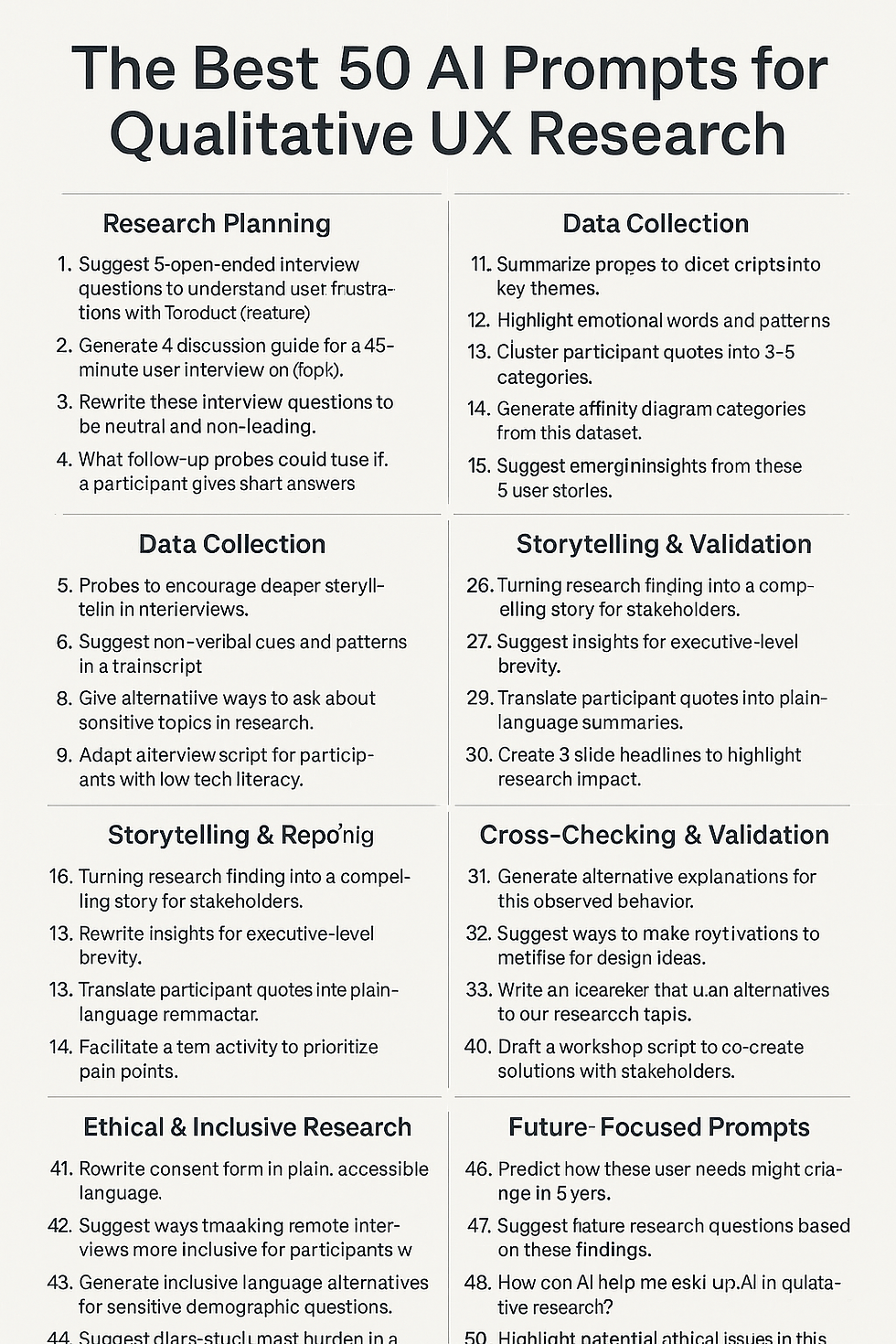The Best AI Prompts to Supercharge UX Research
- Philip Burgess
- Aug 22
- 2 min read
By Philip Burgess - UX Research Leader
AI isn’t replacing UX research—but it can amplify our workflows if used thoughtfully. The key? Knowing how to prompt effectively so the output supports research goals without introducing bias or over-simplification.
Here are some of the most useful prompt categories for UX research—plus why they matter and examples you can use right away.
1. Planning & Scoping
When time is short, AI can help frame a structured research plan.
Prompt Example: “Create a one-page research plan for testing a new mobile onboarding flow. Include objectives, 5 key research questions, suggested methods, and participant criteria.”
Why it matters: Saves setup time, ensures coverage of basics, and gives you a draft you can refine instead of starting from scratch.
2. Screener & Survey Drafting
Recruitment and survey design eat up hours. AI can speed up first drafts.
Prompt Example: “Draft a participant screener for usability testing of a B2B SaaS dashboard. Include knockout criteria and quotas for company size and role.”
Why it matters: AI helps generate options quickly, but you still apply rigor to avoid leading questions or bias.
3. Moderator Guides & Task Writing
Well-written tasks = cleaner insights. AI helps phrase tasks clearly.
Prompt Example: “Write 5 task scenarios for testing a mobile banking app. Tasks should be realistic, measurable, and avoid revealing the solution.”
Why it matters: AI can brainstorm variations, so you pick the most natural-sounding ones.
4. Data Summarization
Slogging through transcripts? AI can cluster and summarize to speed synthesis.
Prompt Example: “Summarize this usability testing transcript into top 5 pain points, observed workarounds, and direct user quotes.”
Why it matters: Researchers still interpret patterns—but AI accelerates sorting and clustering.
5. Insight Framing for Stakeholders
Executives listen to outcomes, not observations. AI can help reframe findings into business language.
Prompt Example: “Rewrite these research findings so they connect user pain points to business risks and opportunities. Output as 3 executive-facing bullets.”
Why it matters: Trains you to speak ROI language and scale your influence.
6. Accessibility & Inclusive Design Checks
AI can flag risks you might miss.
Prompt Example: “Review this mobile screen flow for accessibility issues. Identify risks related to contrast, keyboard traps, and screen reader support.”
Why it matters: AI isn’t perfect, but it gives you a quick accessibility gut check.
7. Globalization & Localization Prep
When scaling globally, cultural nuance is key.
Prompt Example: “Translate this usability task into Spanish, French, and Japanese. Rewrite each so it feels natural in the cultural context.”
Why it matters: AI helps you prepare, though local experts still need to validate.
Final Word
The best AI prompts don’t replace your judgment as a researcher. They:
Accelerate setup and synthesis.
Enhance clarity of tasks, surveys, and insights.
Elevate the conversation by tying findings to outcomes.
Think of AI as your research copilot—fast on drafts, always needing a human pilot.




Comments